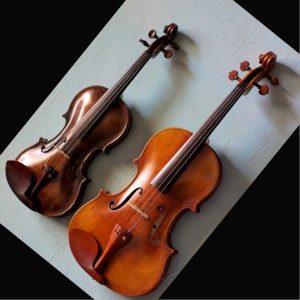Paul Katz of Cleveland Quartet with Tallis Quartet
Quartet Intonation (Part 1) – The Open Strings Dilemma
- No mathematically perfect intonation for all intervals is possible or even desirable.
- Perfect intervals (octaves, perfect fifths, and perfect fourths) can be mathematically pure.
- Intonation necessarily involves subjective decisions and taste.
- The piano is tuned by slightly squeezing the fifths, enabling it to play chords in all keys, and we should do the same with our open strings.
- Open strings are major causes of intonation issues because they are fixed.
- Narrowing the 5ths when tuning open strings helps mitigate these issues.
- C Major and F Major chords are particularly difficult as 2 of the 3 pitches of the chord are open strings.
- Lowering major thirds (not in melodies, but in chords) helps improve overall intonation.
- Demonstration of why C Major and F Major are the most challenging chords.
- Demonstration of how open strings cause significant intonation issues.
- Demonstration of how squeezing the 5ths when tuning open strings (E, A, D, G, C) helps mitigate intonation problems in chords.
- Contrary to common belief, major thirds in chords need to be lowered (but not in melodies).
- Demonstration of the “F Major problem” with the opening of the American Quartet by Dvořák.
About

Cleveland Quartet
For more than a quarter of a century, the Cleveland Quartet was hailed as one of the premier string quartets…
See MoreCellosophy
"For chords to be perfectly in tune, all pitches need to be moveable depending on the key and chord, so open strings often cause intonation problems because their pitch is fixed." -Paul Katz


